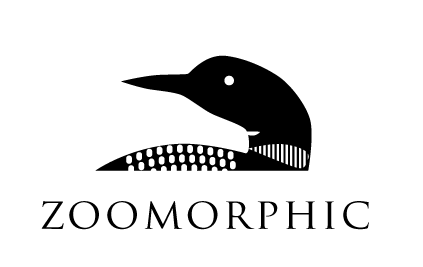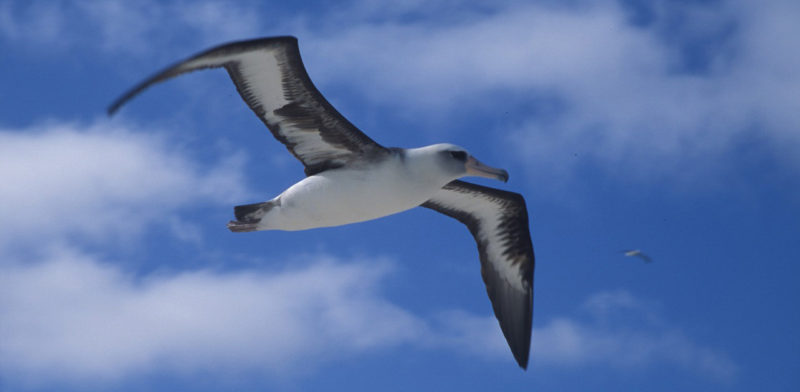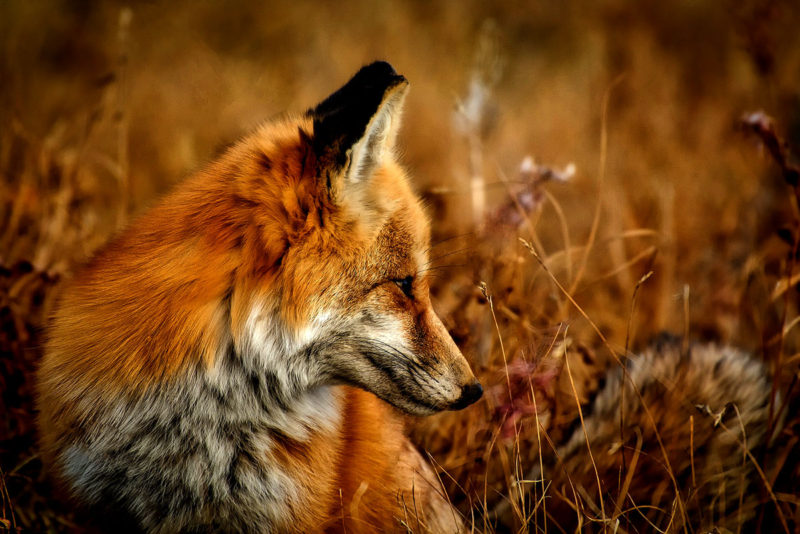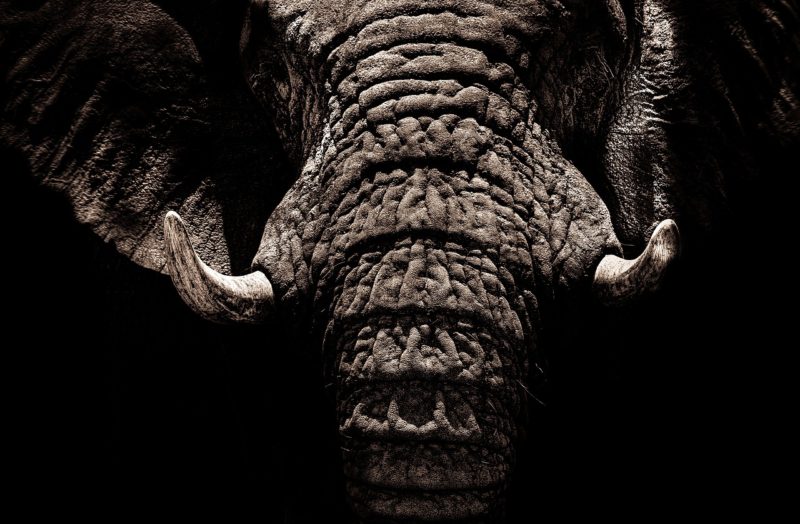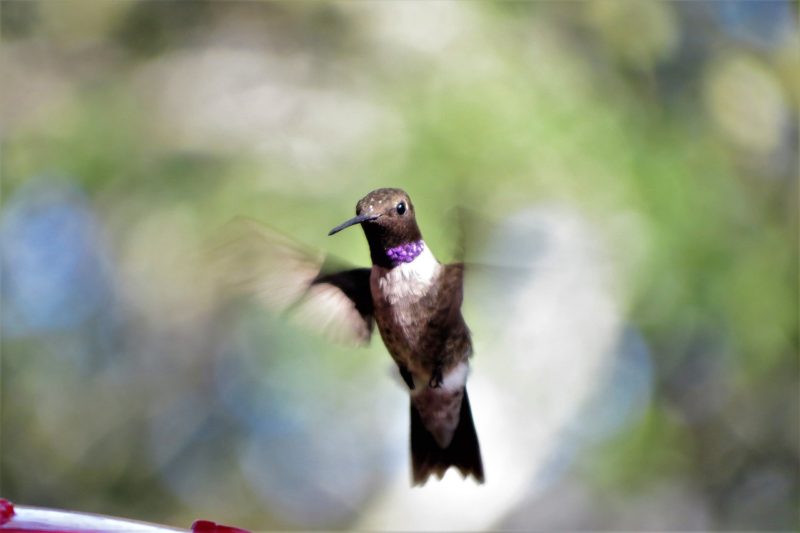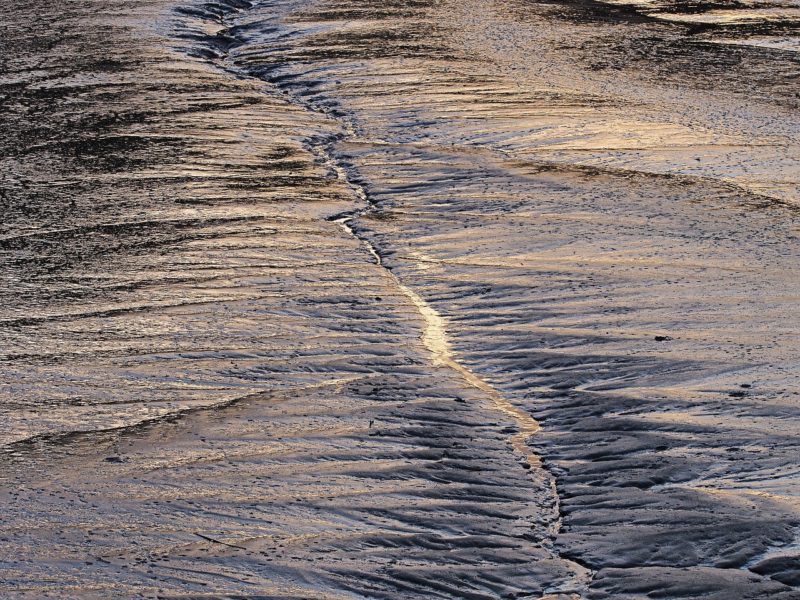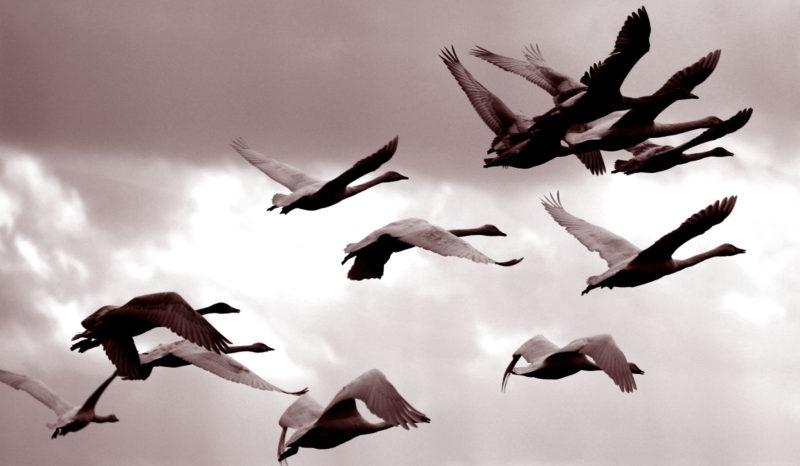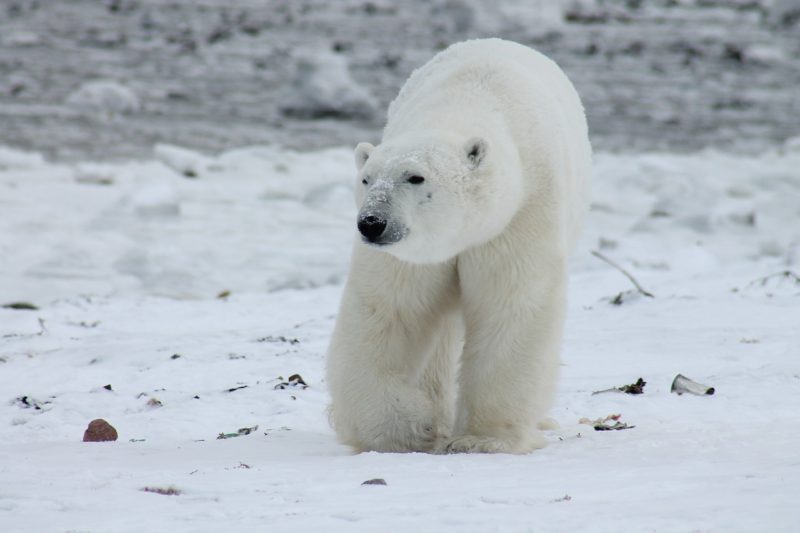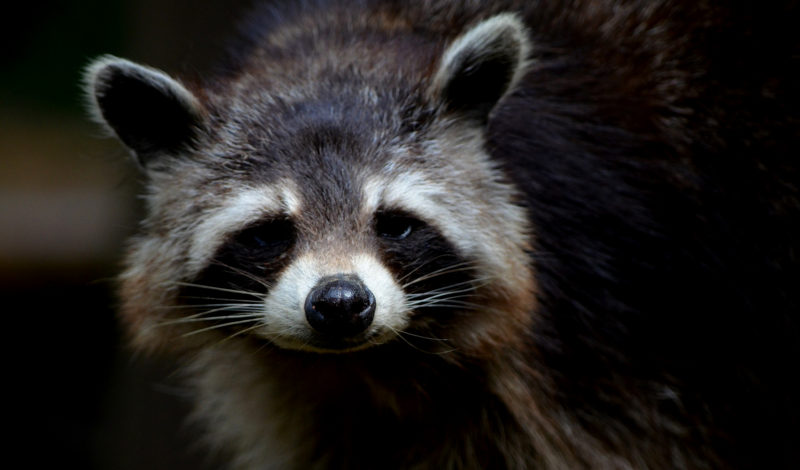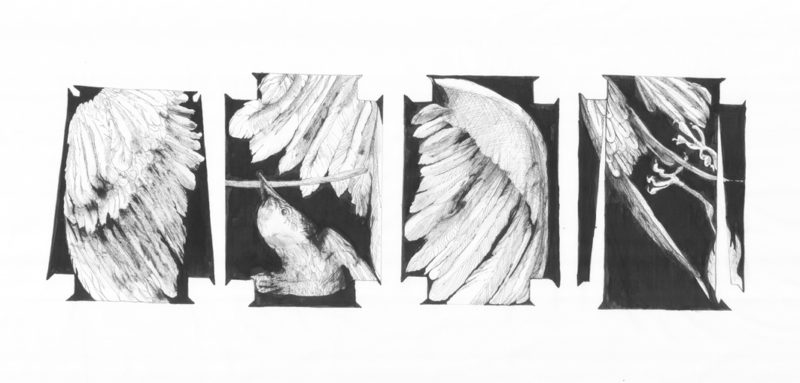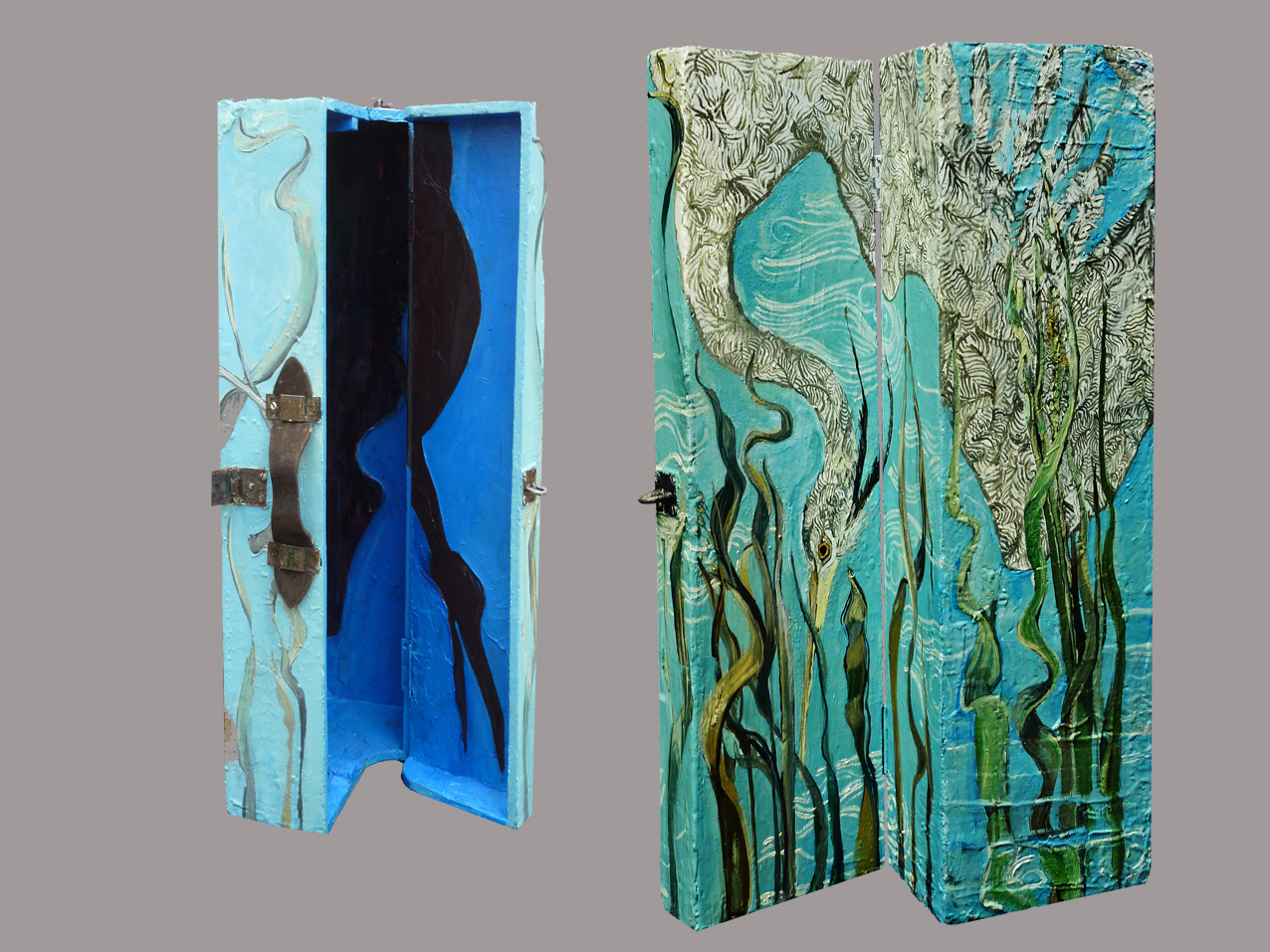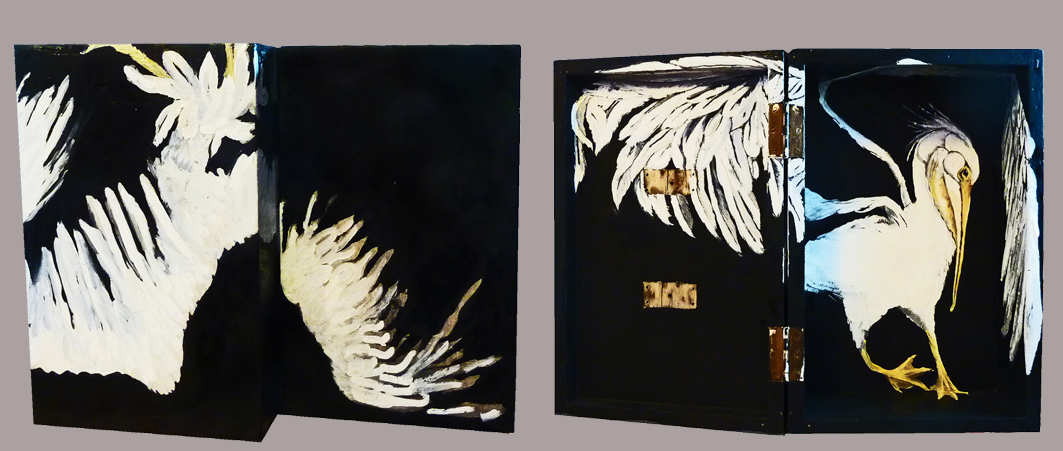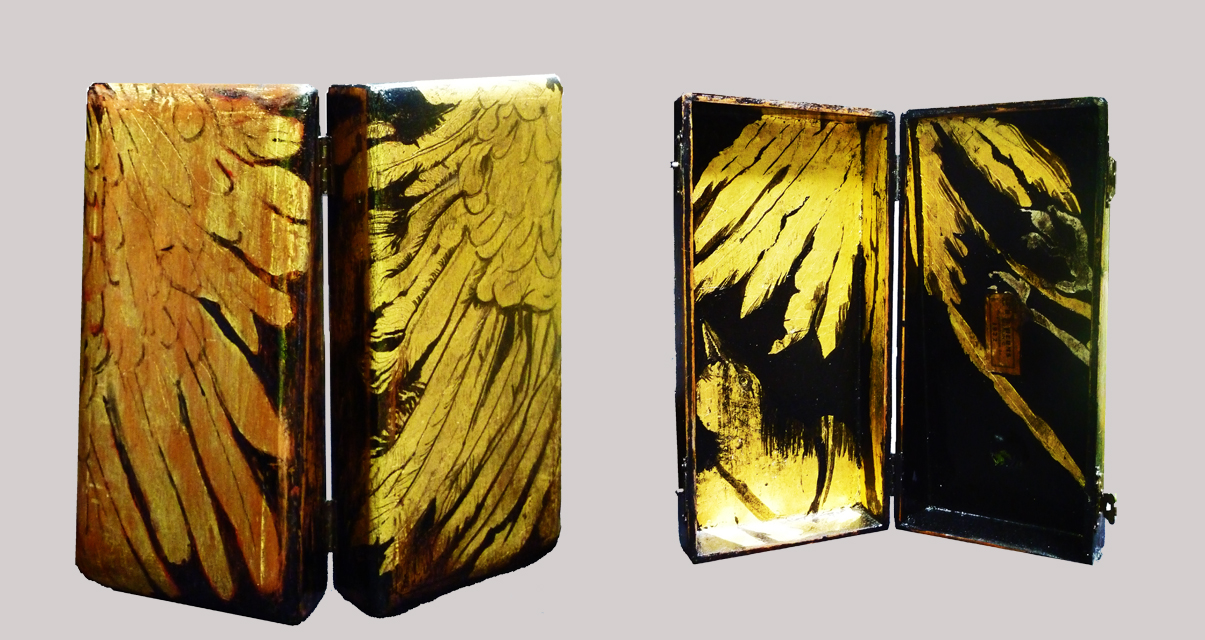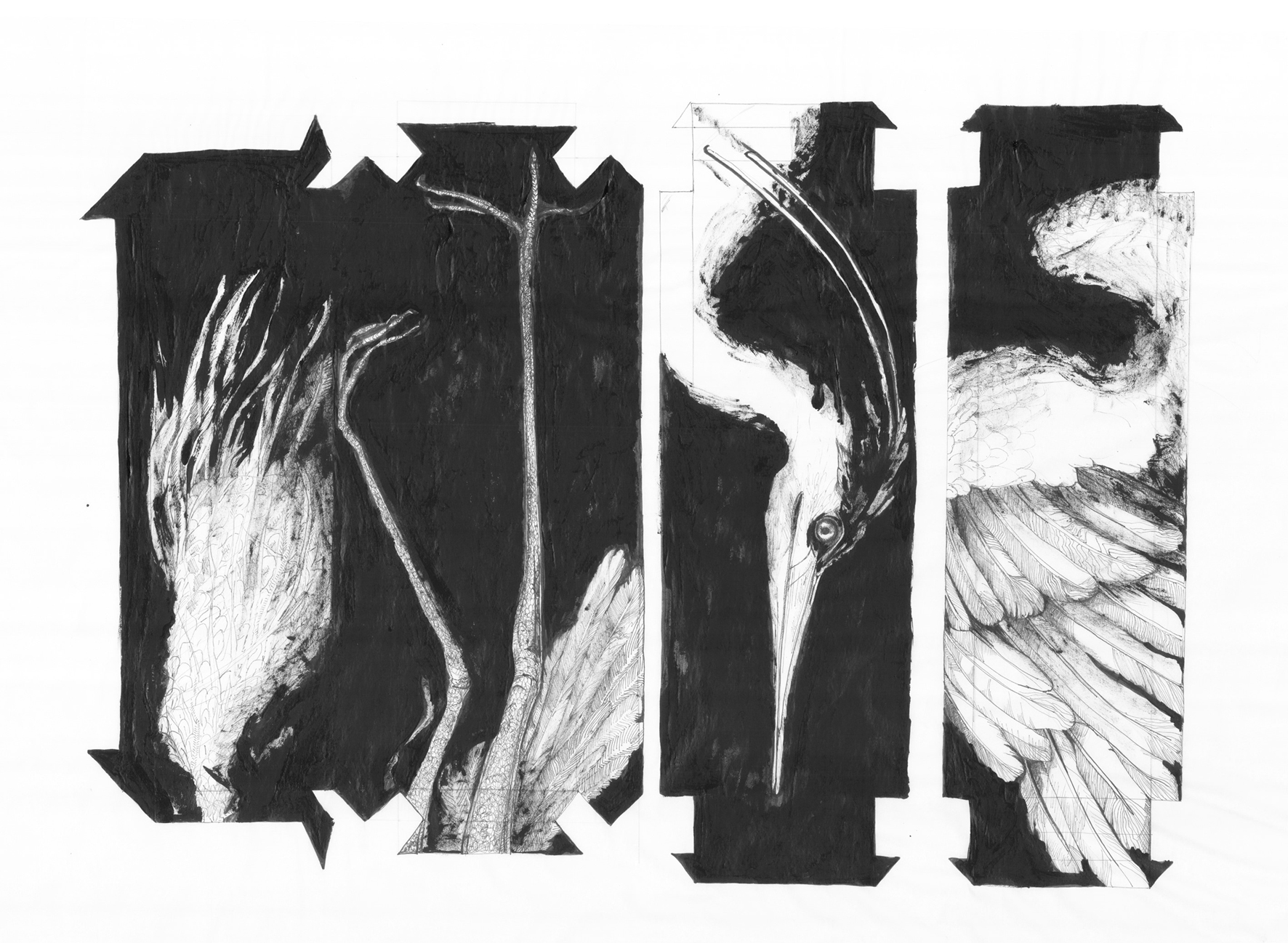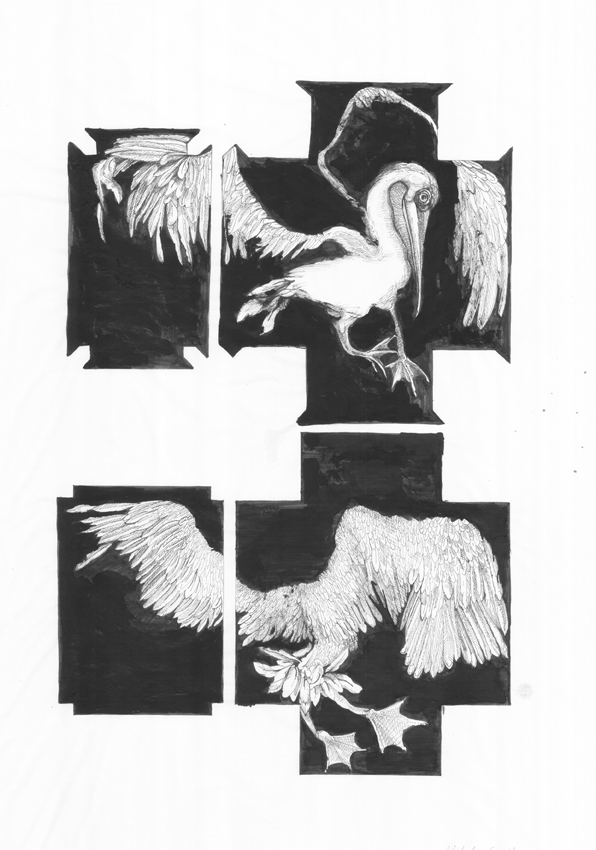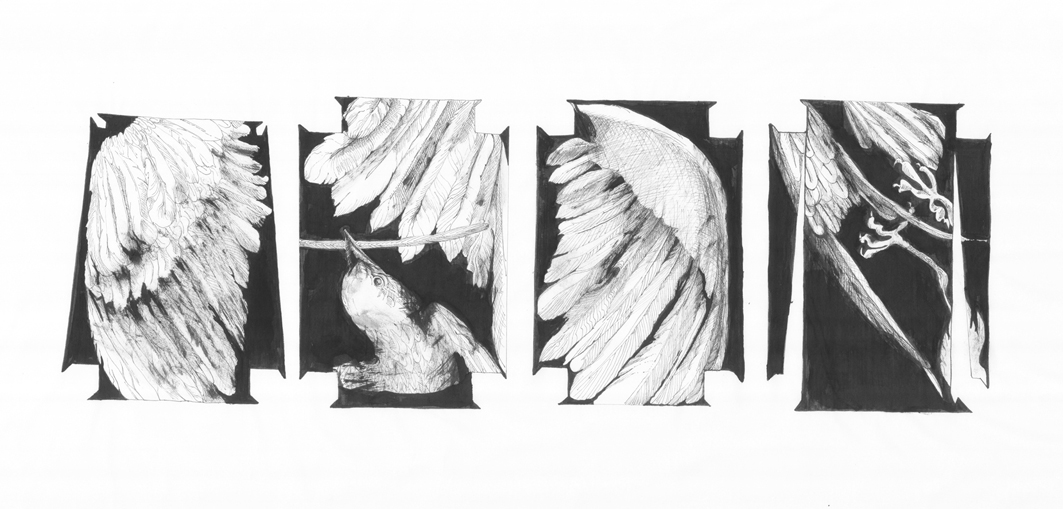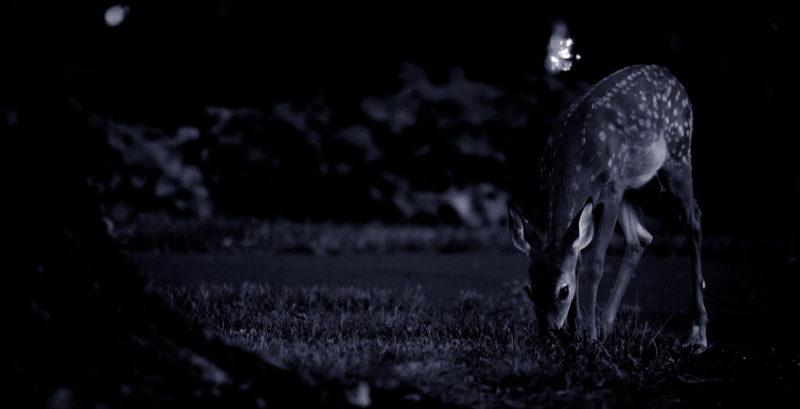by Kim Steutermann Rogers
With their slender wings longer than I am tall, Laysan albatross clock an average of 74,000 air miles a year soaring over the North Pacific. That means if I were an albatross I would have tallied nearly four million frequent flyer miles in my 53 years of life. And, yet, the oldest known wild bird in the world is a Laysan albatross named Wisdom, at a whopping 67 years of age, and she’s pushing five million lifetime miles. That’s a feat of nature hard to grasp with my big human brain or two hands or whatever we use to fathom things.
Where would five million miles take me? From my home in Hawai‘i to San Francisco and back more than one thousand times. From here to my mother in St. Louis—she would love for me to visit more often—and back 1,250 times. Around the belly of the earth 208 times. Ten roundtrips to the moon.
Let’s look at it another way. My insurance agent banks on me putting 15,000 annual miles on the odometer of my car. I’ve been driving since I was 16. That’s 555,000 miles. If I click off 10,000 steps a day on my FitBit—optimistically speaking—that’s 88,000 miles I’ve walked since I started toddling on two legs. If I make one trip by air to see my mother every year—still not enough if you ask her—and another, perhaps, to the West Coast, add another 100,000 air miles for the time I’ve lived in Hawai‘i. We’re looking at a total of 750,000 miles of movement in my lifetime, and that’s relatively little compared to Wisdom. Wisdom makes me look like a wimp.
In thinking about the evolution of an albatross, I wonder why they adapted to have such long, slender wings? I mean, why spend so much time in the air? Why travel so far? I’ve always understood that food drives evolution—the business of finding it and the evasion of being it. That tells me in order to survive, albatross need a lightweight, aerodynamic body to travel the great distances required to find the bits of squid and fish they need to survive. Swimming, I reason, would be metabolically inefficient, not to mention risky since the seabird’s only natural predator, sharks, reside in the sea. But the bird’s miraculous wings do more than allow the bird to soar to the buffet line of food in the North Pacific, they also provide a refuge for sleep. Albatross sleep on the wing, as biologists like to say. Their version of sleep is more like a dolphin resting half its brain while its body keeps moving, rather than our curled-up-ball-of-a-heap of sleeping. That’s some kind of auto pilot.
These are the gymnastics of my imagination.
But I ache for the albatross, flying tens of thousands of miles around the Pacific in search of food for their hungry chick sitting expectantly on its ground nest, on some spit of an island in the middle of the sea. All the while the chick is susceptible to being washed away by the numerous tropical storms sweeping across our globe these days, entire nesting colonies likely to be swallowed up by rising oceans. Ninety-nine percent of the species nests on islands, islets, and atolls that stand a few feet above sea level. I wonder how hard it must be to find food in our warming and overfished seas. I fear these majestic and beautiful birds will succumb to fishing boats and their tantalizing baited hooks of death. I worry that after flying five thousands miles round-trip on a single foraging trip that lasts two weeks or more, a parent may return and regurgitate a meal containing a sharpened bit of plastic that slices its chick’s belly wide open. Albatross are the most threatened group of birds in the world.
Every November on the high-elevation of Kauai where this species is just starting to re-colonize, I wait for these charismatic birds to arrive for the start of their eight-month breeding season, these birds that ocean conservationist and albatross biographer Carl Safina calls, “the world’s greatest living flying machines.” Over the years, I’ve come to know a few of these birds personally. Albatross form decades-long, sometimes lifelong, partnerships and return to the same patch of land to nest year after year, decade after decade. For six consecutive breeding seasons, I’ve watched a pair canoodle under the same Casuarina, an ironwood, and use the tree’s wispy needles and thimble-sized cones to scrape a nest cup around their egg that’s the size of a 12-ounce soda can. There’s also the male hatched on an island off Mexico who I first noticed, because he sported an orange-colored identification band rather the usual colors I’d come to expect of Kauai birds. It took him two years of courtship, rising on tiptoe, tilting his bill into the air and performing maybe a couple dozen different dance moves before deciding on the right and perfect mate. Males take the first long shift of incubating, and right now he’s sitting on an egg on a bluff overlooking the ocean, not a better view, nor better spot for a chick to take their first flight in six months time. Just down the coastline from my Mexican dancer, there’s an adult that, as a chick, was injured in a dog attack, whose neck was miraculously re-stitched by a local seabird rehabilitator and who survived to fledge five years ago. She’s nicknamed Stormy for the moment she realized she was an albatross. After days of care, she shook off her lethargy and shock post-dog encounter when a passing shower reminded her of her purpose in life—to fly. No, to soar. And soar, she has. She’s now partnered with a male two years her senior, and their hopes for the future rest on an egg she laid.
I fear the loss of this family of birds. They are unlike any bird I have ever known. I tell myself we love our world too much to let the extinction of albatross happen. That some child somewhere is right now finding a Nobel Prize winning solution to cleaning up the plastic that’s killing seabirds and whales and eventually us. Maybe already us. That a scientist will slow the warming of our earth, find some way to stop the ice caps from melting. That governments—if not ours—are conspiring right now to eliminate the dredging and destroying of our seas. That we are humans, amazing beyond belief, inventive, creative, and caring. That we won’t let this happen. We won’t desecrate our world.
When Stormy turns her feathery face to mine, this bird, this survivor, this kin of Wisdom the Wonder, both eyes looking at me, emoting and expressing, I see what? Concern? Pleading? Inquiry? I feel her commitment, diligence, fidelity to life. I realize she will continue doing this, flying and providing, for the rest of her days, the rest of ours, the rest of our world’s days, however long. That’s what she does. And, in that moment, I know I will do what’s mine to help her.
Kim Steutermann Rogers fell for albatross on a USFWS volunteer trip to Midway Atoll National Wildlife Refuge in 2008. She’s been writing and photographing them ever since, including for Audubon and Fourth River. Read more at www.kimsrogers.com and see her photography at www.albatography.com. Follow her in the social sphere @kimsrogers.
